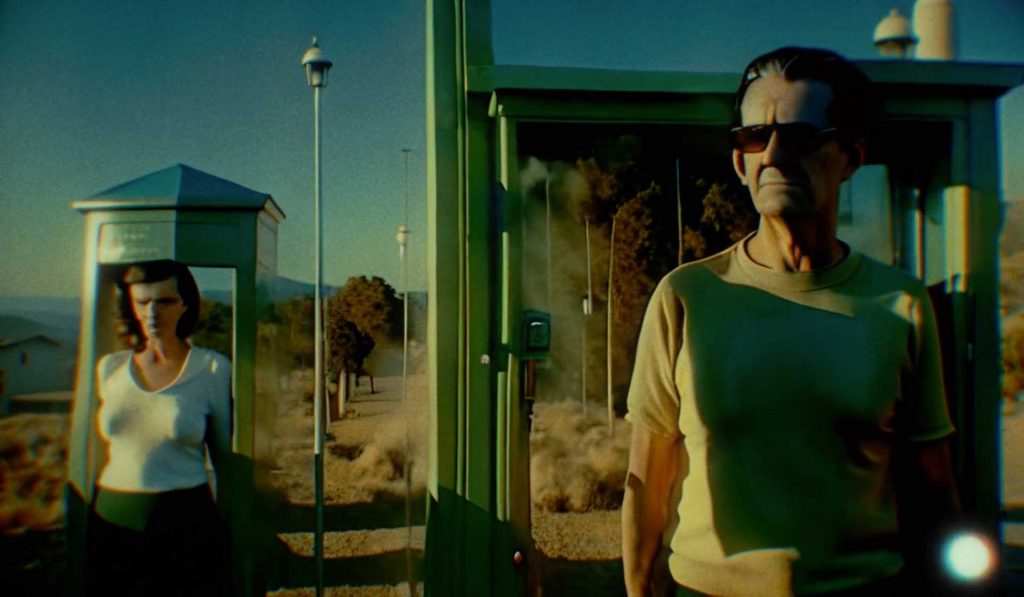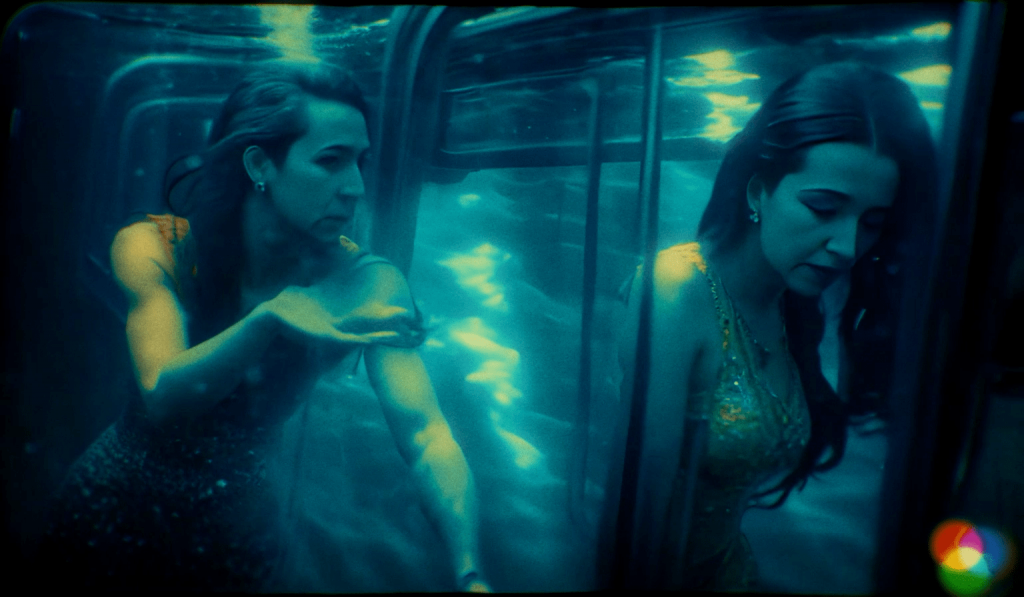The eerie, haunting Thank You for Not Answering is “co-directed” with Runway and intended to evoke a feeling of loneliness and isolation in the viewer
The characters’ blank eyes, distended limbs and distorted features reveal the truth of how they came to exist. They effect created “feels closer to dreaming” says the filmmaker. “It’s closer to when you close your eyes and try to remember something”.

How was machine learning used?
The model used for the films reedy A.I.-generated voiceover was trained on Harry Dean Stanton’s monologue from Paris, Texas. Imagery-wise, it’s full of flashes of flooding subway cars, phone booths in the desert, elegantly dressed people at parties, and apartments lit up at night, with a nod to Edward Hopper and David Lynch.
To begin with, Stable Diffusion was used for concept art and storyboarding. Then the generated images were fed into Runway – one per clip, and with a further paragraph-length text prompt describing the required motion and animation, including suggestions of camera movements to produce a short clip roughly matching the input image and prompts, for example “moody lighting, iconic, visually stunning, immersive, impactful”.

The results are patchy – misshapen human faces, nightmarish hands, unnatural body motion – but that only adds to the film’s overall aesthetic.
Using tools like this and in this way, filmmaking will be “a curatorial and editorial job, where you’re going through iterations and picking the ones that are more interesting”, says co-founder and CEO of Runway, Cristóbal Valenzuela. In this case, the director wrote a script, assembled a visual aesthetic, determined which scenes to create, selected from Runway’s results, and then edited the clips into a threaded, thematically coherent finished product. Machine learning supplied the media—voice, faces, scenery, and animation—but the human creative element is still present in every step of the process.
For advice, guidance and support on how to go about safely using generative AI tools and other forms of AI and machine learning for content creation, feel free get in touch via the Mondatum Contact Us page.
Source: The New Yorker


